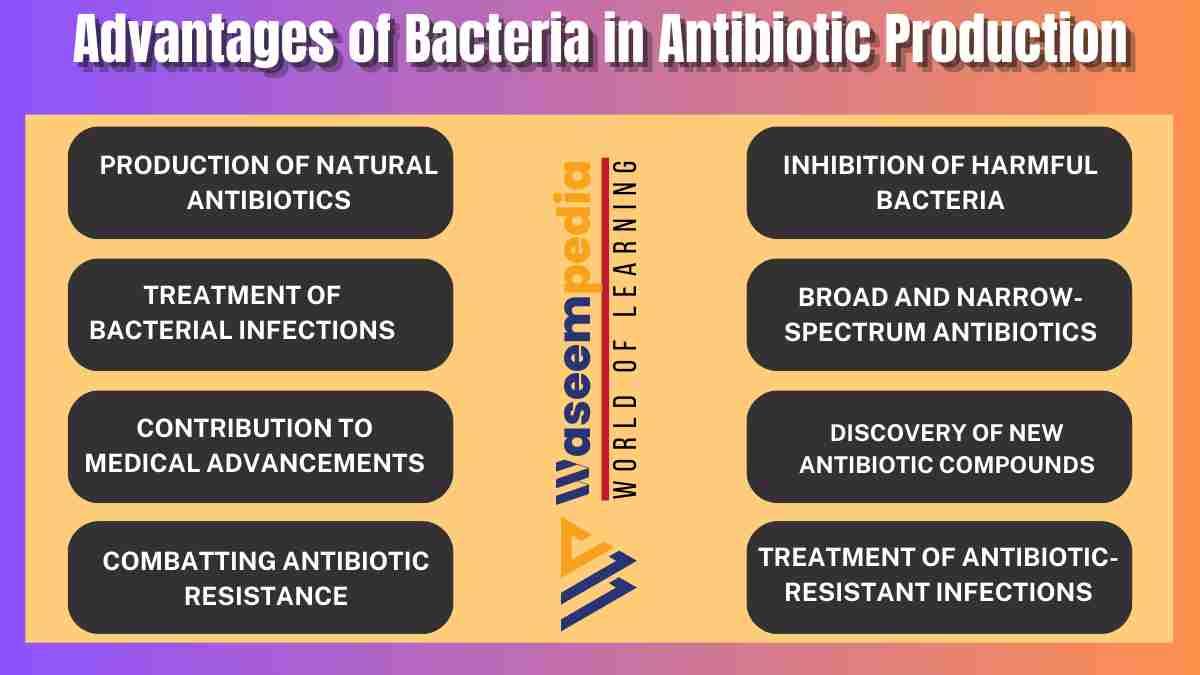Bacteria possess the remarkable ability to produce antibiotics, which play a crucial role in defending against bacterial competitors and shaping microbial communities. The advantages of bacteria in antibiotic production lie in their ability to synthesize diverse compounds with antimicrobial properties.
By studying antibiotic-producing bacteria and discovering new antibiotics, we can continue to combat bacterial infections and address the challenge of antibiotic resistance.
Antibiotics have revolutionized modern medicine, saving countless lives by effectively treating bacterial infections. While antibiotics are commonly associated with pharmaceutical drugs, it’s interesting to note that many antibiotics are actually produced by bacteria themselves.
Bacteria have evolved the ability to synthesize compounds that can inhibit or kill other bacteria, providing them with a competitive advantage in their environment. In this article, we will explore the advantages of bacteria in antibiotic production and highlight their significant contributions to medicine and human health.
Introduction
Antibiotics are substances that can inhibit the growth or kill bacteria, effectively treating bacterial infections. While antibiotics are commonly used to combat infections in humans and animals, it’s fascinating to discover that many of these life-saving compounds are actually produced by bacteria themselves.
Bacteria have evolved the ability to synthesize antibiotics as a means of defense and competition in their natural environments.
5 Advantages of Bacteria in Antibiotic Production
5 Advantages of Bacteria in Antibiotic Production are as follows.
1. Antibiotic Production by Bacteria
Bacteria have a remarkable capacity to produce a wide array of antibiotics. These compounds are synthesized by bacteria to inhibit the growth of other bacteria, preventing them from competing for resources or causing harm. Through the process of antibiotic production, bacteria gain a significant advantage in their ecological niche.
2. Natural Antibiotic Synthesis
Bacteria employ various mechanisms to synthesize antibiotics. They possess the genetic information required to produce specific enzymes and compounds involved in antibiotic synthesis.
These enzymes and compounds work together to create antibiotics with diverse structures and modes of action, targeting specific components or processes within bacterial cells.
3. Broad-Spectrum vs. Narrow-Spectrum Antibiotics
Bacteria produce both broad-spectrum and narrow-spectrum antibiotics. Broad-spectrum antibiotics are effective against a wide range of bacteria, while narrow-spectrum antibiotics target specific groups or strains of bacteria.
The production of different types of antibiotics allows bacteria to compete against a variety of microbial competitors and adapt to different environmental conditions.
4. Antibiotic Resistance
The emergence of antibiotic resistance poses a significant challenge in modern medicine. Bacteria have evolved various resistance mechanisms to counteract the effects of antibiotics. However, it’s important to note that antibiotic resistance is not solely driven by bacteria producing antibiotics.
The overuse and misuse of antibiotics in medicine and agriculture also contribute to the development of resistance. Antibiotic-producing bacteria can also harbor genes that confer resistance to their own antibiotics.
5. Expanding the Antibiotic Arsenal
The study of antibiotic-producing bacteria has great potential for expanding our antibiotic arsenal. By exploring the vast diversity of bacteria and their natural environments, researchers can discover new antibiotics and novel compounds with antimicrobial properties.
Bacteria isolated from unique habitats or symbiotic relationships have proven to be valuable sources of previously unknown antibiotics, offering hope for the development of effective treatments against drug-resistant bacteria.

